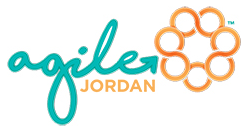“How do we get our clients to work in an Agile way with us?” A lot of companies, especially technology companies, ask this question. Understandably so, they understand the value of Agile yet the clients are rarely ready to join.
So what do clients want? In short, a sense of control. And to provide a sense of control we traditionally tried to make the time and cost known, and to do that we pushed known scope. But this is a false sense of control. This attempt to make the unpredictable predictable has failed in client engagements.
What we are trying to do in Agile is to flip this formula. We deliver value quickly, not just work, and give the client the ability to adjust. We need to keep in mind the value in the Agile Manifesto “Customer collaboration over contract negotiation.” Where we focus our efforts on collaborating more than negotiating.
The approach will vary depending on the client and the level of trust built between you and them. Let us break them down using the Law of diffusion of innovation. by creating different strategies for each by adoption appetite.
Think of them not only as clients segmentation but also as steps to convincing a client. In general, trust is key to working in Agile so if you have built a relationship with your client, they are more likely to accept.
- Innovators: This client might even request that you work in an Agile way and tell you that they have a product owner dedicated for the project. A dream client, but also very rare. These clients are also risky as they will expose any non-Agility in your team.
- Early adopters: These need a bit of explanation of Agile and how the work will be structured and they will be on board. Making it visible and easy to envision is crucial here. Maybe an example or a case study.
- Early Majority: this is where things start getting interesting. If you have a case, maybe not even ones you worked for, and someone in the same industry and Market. It will be a huge boost for the cause. Early Majority will understand the concept, but will have more doubts that you need to ease. Maybe starting with trial sprints and see the feedback giving the option to opt back to traditional.
- Late Majority: The late majority need proof. Direct results. You can start by presenting two options for them, one with Agile and one traditional. Use the cheat sheet to highlight the differences. You can positively shock that client by clarifying that by the time we finish planning and giving you the deadlines in traditional, we can give you a working product with the most important features. That you and your users can start using and providing feedback on.
- Laggards: I am not a person who can judge if they are worth the effort of convincing. You can tell them what you need to work for them in an Agile way, without telling them about Agile. Give them their beloved deadlines that only stand if there are no changes. Yet stay open to changes and help them work with you in Agile without them needing to know it.
Comparison arguments you can use as a means of giving the client the choice:
- Agile Vs. Traditional cheat sheet
- Agile projects are 3 times more successful, 4 times faster, and 56% more likely to satisfy customers. See “The business case for Agile” for more.
- Create a case of similar projects you worked on for different clients and the differences for how those cases impacted the client.
The Highest risk you might run is if you are not truly Agile and just doing the frameworks on a shallow level. This will obliterate the trust in you and in Agile, which might never recover. Take the free Business Agility Assessment and see where you stand.
Additional resources:
https://www.slideshare.net/MatthewCaine/how-to-convice-management-clients-to
https://www.wbpro.com/how-to-sell-agile-methodology-to-sceptical-clients/
https://pm.stackexchange.com/questions/1063/how-do-you-convince-a-client-to-use-agile-methods
https://www.aoe.com/en/blog/how-do-i-get-my-clients-to-work-according-to-agile-principles-000793.html

